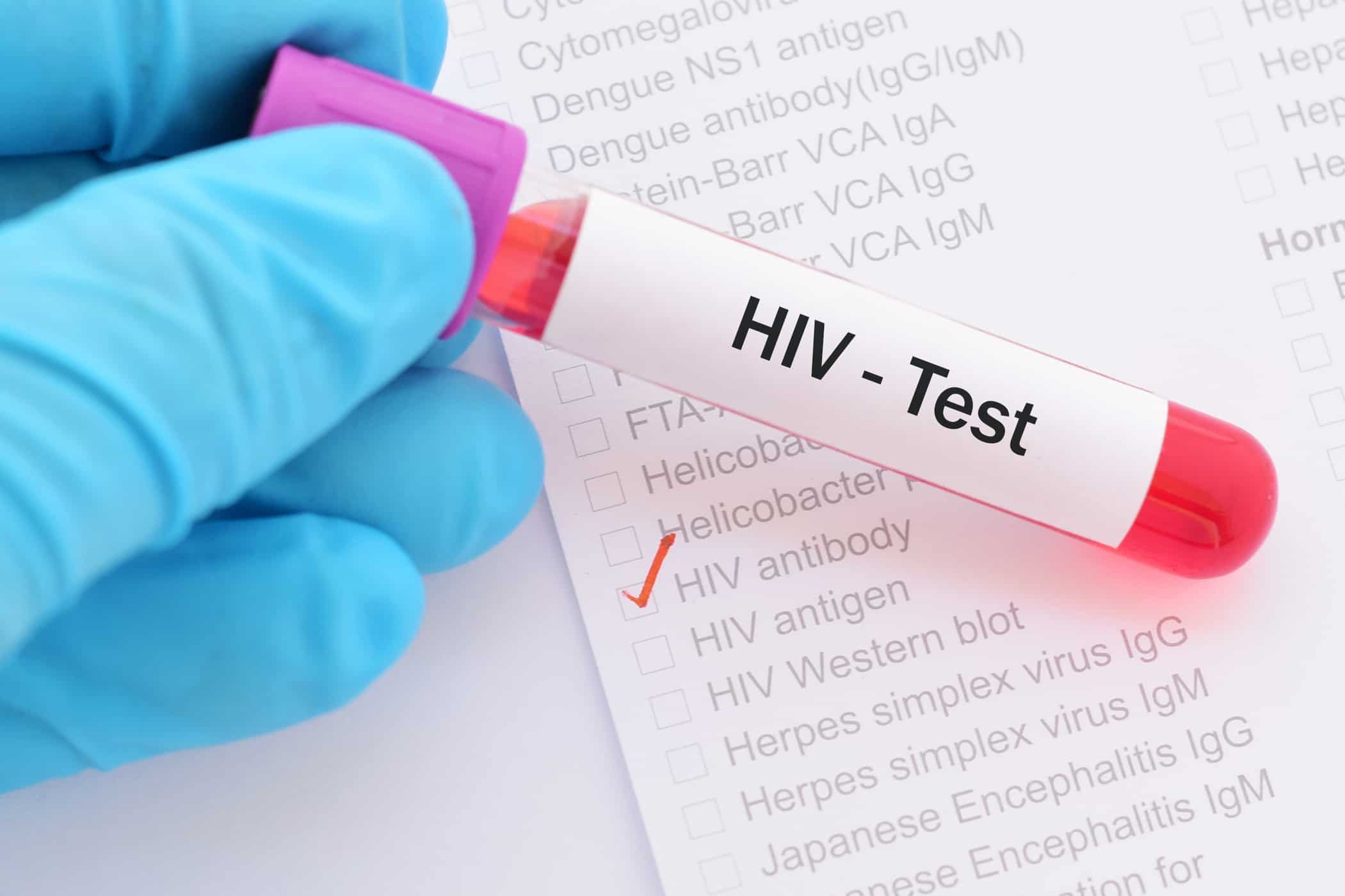Contents:
- Medical Video: Toxicity Comparison (This little will KILL you)
- What is cyanide poison?
- History of the use of cyanide
- How do cyanide poisons work?
- Sources of cyanide poisons that we can meet everyday
- Signs and symptoms of cyanide poisoning
- How many doses of cyanide are deadly?
- How can doctors diagnose whether someone is cyanide poisoning?
- Can cyanide poisoning be treated?
- How long will the death come after exposure to high-dose cyanide?
- Is it true that cassava contains cyanide poison?
- How can we still eat cassava safely and not cause poisoning?
Medical Video: Toxicity Comparison (This little will KILL you)
Who doesn't know about the 'cyanide coffee' case? The case that has shocked the people of Indonesia lately, took the life of a victim who died from coffee mixed with cyanide poison. The effect is also terrible, in a short time, the victim died immediately. Actually what that cianide toxicant?
What is cyanide poison?
Cyanide poison is rarely used, but very deadly. Cyanide poison makes your body unable to use the oxygen you need.
The term cyanide refers to a chemical containing a carbon-nitrogen (CN) bond. Many substances contain cyanide, but not all deadly poisons. Sodium cyanide (NaCN), potassium cyanide (KCN), hydrogen cyanide (HCN), and cyanogen chloride (CNCl) are deadly, but thousands of compounds called nitriles contain cyanide groups but are not toxic.
Actually, we can find cyanide in nitriles which are used as drugs, such as citalopram (celexa) and cimetidine (tagamet). Nitriles are not dangerous because they are not easy to release CN ions, which are groups that act as metabolic poisons.
History of the use of cyanide
This might not be what you imagined. Although cyanide poison is a killer chemical, in fact this substance was originally used in the world of mining, as a binder of gold precious metals. Using amalgamation with cyanide, the amount of gold that can be obtained can reach 89-95%, much better than other methods which only reach 40-50%.
But after the war broke out, the use of cyanide was transferred to its function as a dangerous chemical and began to be used for genocide and suicide poisons.
Another use of these poisons is to kill mice, curut, and mice to protect food crops.
How do cyanide poisons work?
In short, this poison prevents body cells from using oxygen to produce energy molecules. In this poison there is a chemical compound called anianide ion, CN-, this compound can bind iron atoms in the cytochrome C oxidase that is in mitochondrial cells.
This toxin acts as an irreversible enzyme inhibitor or prevents the cytochrome C oxidase in mitochondrial cells from doing its job, transporting oxygen into an energy carrier.
Without the ability to use oxygen, mitochondrial cells cannot produce energy carriers. Even though it's a networklike heart muscle cells and nerve cells, need this energy carrier. If not, then all the energy will run out. If a large number of critical cells die, humans will die.
Simply put, this poison makes your body unable to use the oxygen you really need.
Sources of cyanide poisons that we can meet everyday
During this time, perhaps the community began to recognize the name cyanide poison from the case of 'cyanide coffee', where the victim was poisoned by this poison powder which had been mixed into the coffee. In fact, without realizing it, in fact we might breathe this poison in everyday life, but on a very small scale so the effect is not deadly.
Here are some everyday items that might expose you to cyanide poisons:
- Smoke from fires or burning tools such as rubber, plastic and silk forms smoke containing cyanide.
- Cyanide used for photography, chemical research, synthetic plastics, metal processing, and industry electroplatting.
- Plants that contain cyanide such as apricots and cassava plants. Fortunately, cyanide poisoning only occurs if you are severely exposed to these plants.
- Laetrile, a component containing amygladin (a chemical that can be found in raw fruit, nuts and plants) has often been used for cancer treatment. One side effect of using laetrile is cyanide poison. Until now the FDA (US Food and Drug Administration) has not approved the use of laetrile as a cancer treatment. However, in other countries, in Mexico for example, laetrile has been used as a cancer treatment with the name "laetrile / amygdalin" drug.
- The types of chemicals, after entering your body and being digested by your body, can be converted by your body into cyanide. Mostly, these chemicals have been banned from the market. However, some chemicals such as nail polish remover and plastic processing liquid may still contain this cyanide.
- Cigarette smoke is the most common source of cyanide. Cyanide is naturally found in tobacco. Smokers' blood may contain 2.5 times more cyanide than non-smokers. Although indeed the amount of cyanide from tobacco does not poison you, but for the long term, it is important not to avoid smoking?
Signs and symptoms of cyanide poisoning
Actually, cyanide poisoning is rather difficult to detect. The effect of cyanide is very similar to the effect of breathlessness, because cyanide works by stopping cells in the body from using the oxygen needed to survive. Following are signs of someone cyanide poisoning:
- Lemas, confusion, strange behavior, excessive sleepiness, coma, shortness of breath, headache, dizziness, and attacks can occur together if cyanide poisoning is high.
- Usually, if someone is suddenly cyanide poisoned and is immediately acute (as in the case of cyanide coffee), the effect is dramatic. The victim will immediately be hit by a rapid attack, attack the heart and cause the victim to faint. Can this cyanide poison attack the brain and cause coma.
- Cyanide poisoning due to long-term effects or due to environmental factors usually does not get an acute direct attack.
- The skin of a person who is cyanide poisoning usually turns into a strange pink or cherry red due to oxygen that cannot reach the cell and stays in the blood. The person will also breathe very quickly and may have a very fast heartbeat or even very slow. Sometimes, the breath of a person with cyanide poisoning smells like bitter almonds.
How many doses of cyanide are deadly?
Depends on exposure, dosage, and duration of exposure. Inhaling cyanide may have a greater risk than if it is ingested. If exposed to this toxin through kontak skin, the effect may not be too severe compared to if cyanide is swallowed or inhaled.
The dose of cyanide poison can be deadly depending on the compound and several other factors. Half a gram of ingested cyanide can kill adults who weigh 80 kg.
Usually the victim will lose consciousness, followed by death, in a few seconds after inhaling cyanide in high doses, but lower doses both ingested and inhaled make a person have to undergo intensive care for several hours or even several days in the hospital.
How can doctors diagnose whether someone is cyanide poisoning?
If there are people around you who seem to be cyanide poisoning, don't act alone. Quickly find help so the victim can be immediately taken to the doctor. Cyanide poisoning is actually something that can still be saved.
Most victims of cyanide poisoning die from a diagnosis that is not fast, undetectable from the start, or because of sudden severe poisoning in very high doses. Following are the steps doctors diagnose people who are cyanide poisoning:
- If you help victims of cyanide poisoning, you will definitely be asked what happened to the victim. You will be asked if there are suspicious bottles around the victim, whether the victim has physical or psychological problems, and other information. Keep calm and answer those questions as best you can, because this information is very important for diagnosing victims.
- The doctor will do a blood test, x-ray, and other procedures needed to try to diagnose whether cyanide has poisoned the victim's body, how severe the victim is cyanide poisoning, or whether there is another type of poisoning that attacks the victim.
This cyanide diagnostic test can take hours or even days. Therefore, doctors depend on a combination of information from the victim's helper, how the victim is, and data from the laboratory for the initial diagnosis.
Can cyanide poisoning be treated?
Because cyanide is a toxin that is actually present in the environment, the body can detoxify a small amount of cyanide. For example, when you eat apple seeds or smoke, which actually contains cyanide, you don't experience death right away, right?
If cyanide is used as a poison or chemical weapon, treatment depends on the dose. High doses of cyanide that are inhaled too quickly turn off, first aid help for victims who breathe cyanide is trying to get the victims to get fresh air.
If the victim breathes cyanide in a lower dose it will usually be overcome by administering antidotes that can detoxify cyanide, such as natural vitamin B12 and hydroxocobalamin which will react with cyanide to form cyanocobalamin, and can be excreted in the urine.
Depending on the condition, recovery is very possible. However, paralysis, liver damage, kidney damage, and hypothyroidism do not rule out the possibility.
How long will the death come after exposure to high-dose cyanide?
Short-term exposure to cyanide can cause irritation to the nose and mucous membranes. If the concentration is more than 5 mg / m3, alkaline cyanide fog can cause injuries and nasal bleeding. If absorbed in sufficient quantities, systemic effects can occur, as well as in short-term ingested exposure.
Exposure to cyanide compounds in low concentrations for long periods of time can cause a decrease in appetite, headaches, weakness, nausea, dizziness and irritation symptoms in the upper respiratory tract.
Swallowing cyanide in very large doses can result in sudden loss of consciousness, often accompanied by seizures and death, generally within 1-15 minutes.
Lower cyanide doses can cause corrosion of the mucous membrane of the stomach, unpleasant odor of tonsils in the breath, burning sensation, feeling of suffocation in the throat, appearance of spots on the face, discharge of saliva, nausea with or without vomiting, anxiety, confusion , dizziness, giddiness, weakness, headache, rapid pulse, palpitations, and stiffness in the lower jaw. The rate and depth of breathing generally increases initially, and then becomes slow and panting.
Diarrhea and urinary incontinence (urination in the pants) can also occur. In addition, seizures can be followed by paralysis. The eyeball may stick out while the eye bead does not react. From here, damage to the optic nerve and retina to blindness can occur. The mouth may come out foam (sometimes the foam is accompanied by blood), which is a sign of the occurrence of pulmonary edema.
Death can occur within four hours and may be caused by cessation of respiratory system function or anorexia in the tissue. Other symptoms can include chest pain, speech, and stages of temporary stimulation of the central nervous system with headaches.
Meanwhile, ingesting these compounds in very low concentrations for long periods of time can cause a decrease in appetite, headaches, weakness, nausea, and dizziness.
Is it true that cassava contains cyanide poison?
Some plants also produce cyanide poisons, one of which is cassava.
Why has no one been poisoned when eating boiled cassava? In nature, cassava or cassava produces this poison in the form of a cyanogenic glycoside called linimarin.
Cyanogenic glycosides are relatively non-toxic, but the enzymatic processes that occur in the human body can break them down into hydrogen cyanide, one of the most toxic forms of cyanide poison.
Fortunately, not all types of cassava produce these compounds in large quantities. The types of cassava which are commonly consumed daily generally produce cyanide in very small amounts, and the level decreases with proper processing.
How can we still eat cassava safely and not cause poisoning?
Please note that not all cassava contains high levels of cyanide poisons. We can tell which cassava contains high or low levels of cyanide poisons.
Cassava which has a high cyanide poison content usually has very red stems. If peeled, the cassava tubers are red instead of white.
Apart from outside appearance, cassava which is poisonous if eaten will taste bitter, while cassava which is not toxic if eaten will taste sweet when eaten fresh. However, there are indeed some cassava which, if eaten, will taste sweet at first. Then, not too long it will feel bitter on the tongue.
If something like this happens, immediately stop eating it, but there's no need to panic because this won't make you sick or die. To overcome this, drink enough water.
Processing cassava before consumption can reduce the levels of cyanide it contains. Before cooking, cassava should be soaked in water for a certain period of time. This immersion process can reduce the levels of cyanide toxins in cassava. This is because HCN is a water-soluble acid.












